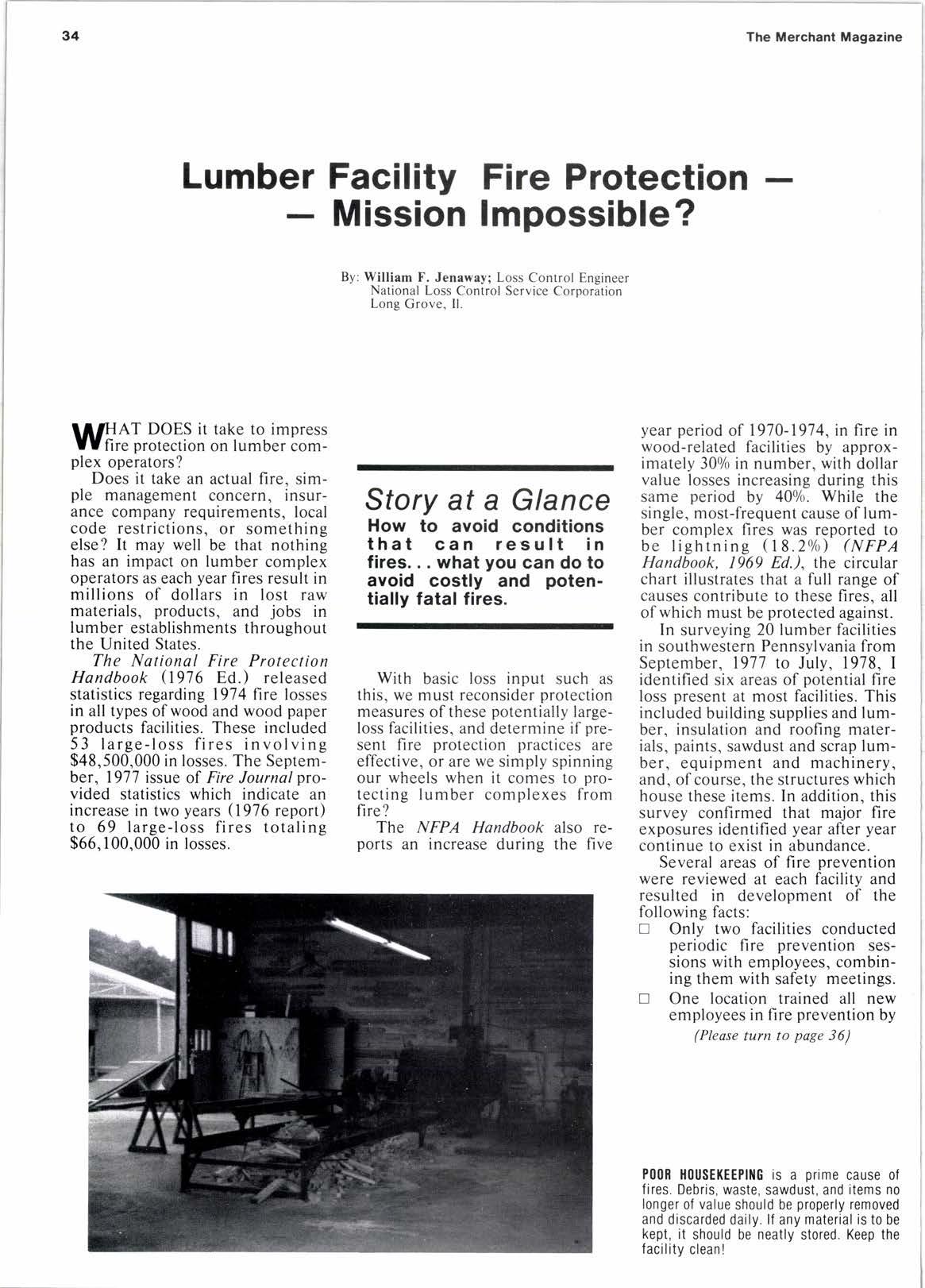
1 minute read
Lumber Facility Fire Protection- Mission lmpossible?
By: William F. Jenaway; Loss Control Engineer National Loss Control Service Corporation Long Grove, Il.
llrHAT DOES it take to impress UUfire protection on lumber complex operators?
Does it take an actual fire, simple management concern, insurance company requirements, local code restrictions, or something else? It may well be that nothing has an impact on lumber complex operators as each year fires result in millions of dollars in lost raw materials, products, and jobs in lumber establishments throughout the United States.
The National Fire Protection Handbook (l976 Ed.) released statistics regarding 1974 fire losses in all types of wood and wood paper products facilities. These included 53 large-loss fires involving $48,500,000 in losses. The September, 1977 issue of Fire Journal provided statistics which indicate an increase in two years (1976 report) to 69 large-loss fires totaling $66.100.000 in losses.
Story at a Glance How to avoid conditions that can result in fires. . . what you can do to avoid costly and potentially fatal fires.
With basic loss input such as this, we must reconsider protection measures of these potentially largeloss facilities, and determine if present fire protection practices are effective, or are we simply spinning our wheels when it comes to protecting lumber complexes from fire?
The NFPA Handbook also reports an increase during the five year period of 1970-1974, in fire in wood-related facilities by approximately 300/o in number, with dollar value losses increasing during this same period by 400/0. While the single, most-frequent cause of lumber complex fires was reported to be lightninc (18.20/o) (NFPA Handbook, 1969 Ed.), the circular chart illustrates that a full range of causes contribute to these fires, all of which must be protected against.
In surveying 20 lumber facilities in southwestern Pennsylvania from September, 1977 to July, 1978, I identified six areas of potential fire loss present at most facilities. This included building supplies and lumber, insulation and roofing materials, paints, sawdust and scrap lumber, equipment and machinery, and. of course. the structures which house these items. In addition, this survey confirmed that major fire exposures identified year after year continue to exist in abundance.
Several areas of fire prevention were reviewed at each facility and resulted in development of the following facts:
! Only two facilities conducted periodic fire prevention sessions with employees, combining them with safety meetings. tr One location trained all new employees in fire prevention by (Please turn to page 36)










